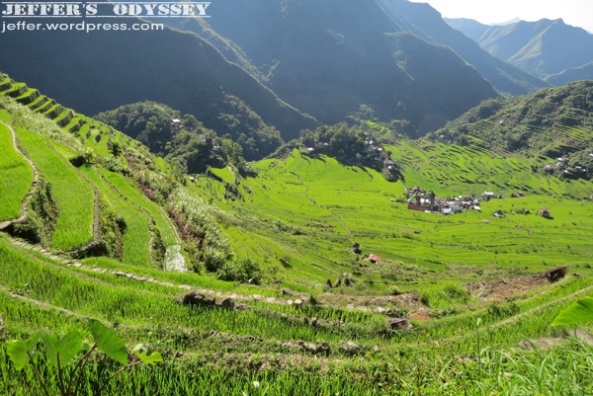They say some things are sweeter the second time around. In case of travel or, to be more precise, visiting one place for the second time, that could be a hit or a miss. It’s a hit if the place, which you absolutely loved the first time around, did not change or, even if it did, it changed only in good ways. It’s a miss if it’s the opposite: the changes weren’t good. How was my second visit to the Batad Rice Terraces, you ask? Read on.
The Batad Rice Terraces is not as famous as the Banaue Rice Terraces, which also happens to be in the same province of Ifugao. It, however, has its own beauty, and the boom of tourism in recent years proves that, as more and more domestic and foreign tourists take the arduous, bumpy, and long journey to this piece of heaven in the Cordillera region.
The claim to fame of the Banaue Rice Terraces is that it resembles a “stairway to heaven”. The Batad Rice Terraces, on the other hand, looks like an amphitheater, with the terraced side of the mountain scooping into a bowl or an upside down dome, with a small village in the middle. Just like the terraces in Banaue and the other terrace clusters in the province (and in the region, for that matter), these were toiled over by our Igorot ancestors. Something that I, a pure Igorota, albeit from Benguet, will forever be proud of.
We woke up early the next day, had breakfast, then set off for the waterfalls. In order to do that, you’d have to cross through the rice terraces. Now you have two choices: take the route that will take you past the viewpoint, or go down through the village. The first option is definitely longer, tougher, and more challenging. But we wanted to experience the whole nine yards, so we decided to go to the viewpoint on our way to the waterfalls, then come back up by way of the village.
So join me on this journey through the photos below. Photos are mine, unless otherwise indicated in the captions.
From where we were staying, there is a clear view of the viewpoint. See that line on the side of the mountain, right above the terraced area? It’s a path that will lead you to the viewpoint, which is that slightly protruding part at the end.
Whenever we make estimates on how long it would take us from point A to point B, we always tack on an added 30 minutes to 1 hour because, well, we have a default setting. We stop every now and then to take photos.

And, really, you are bound to stop when you get to lay eyes on sights like these:

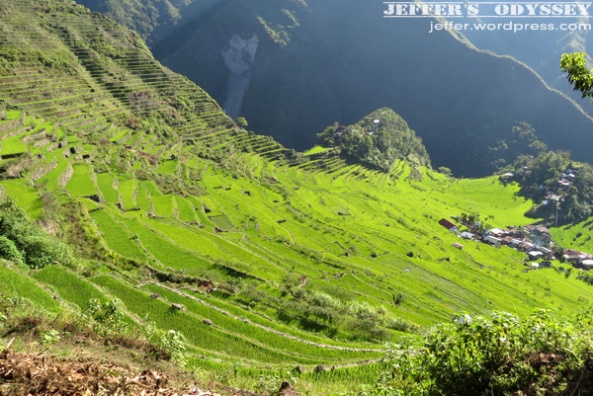 In the pic above, spot that area that looks like a hill in the middle? It’s a pit stop of sorts, kinda like a jump-off point when you go down to the waterfalls. That is where you’ll rest when you just got down from the viewpoint (or up from the village, a part of which you can also see in the pic.)
In the pic above, spot that area that looks like a hill in the middle? It’s a pit stop of sorts, kinda like a jump-off point when you go down to the waterfalls. That is where you’ll rest when you just got down from the viewpoint (or up from the village, a part of which you can also see in the pic.)
Here’s a clearer view of the village (called Babloi) in the middle of the “amphitheater”.

You’d have to watch your step, though. But compared to the terraces in Tinglayan, I think these were a bit wider and can actually give you more stable footing.

 Plus it’s always satisfying to look back and see how far you’ve come.
Plus it’s always satisfying to look back and see how far you’ve come.
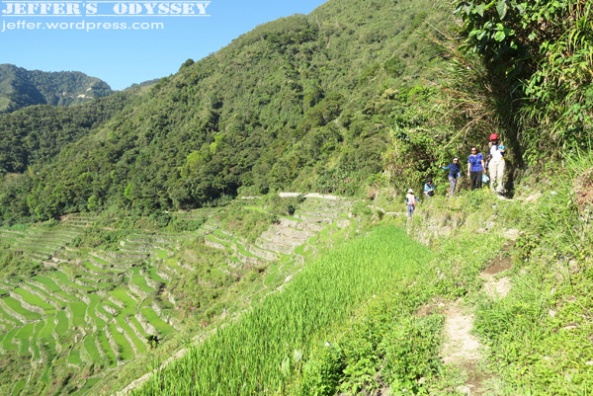 And after around 30 minutes or so, we arrived at the viewpoint!
And after around 30 minutes or so, we arrived at the viewpoint!

 Sights like these never fail to take my breath away. Forget the scorching heat and the blinding glare of the sun, this is just… wow.
Sights like these never fail to take my breath away. Forget the scorching heat and the blinding glare of the sun, this is just… wow.

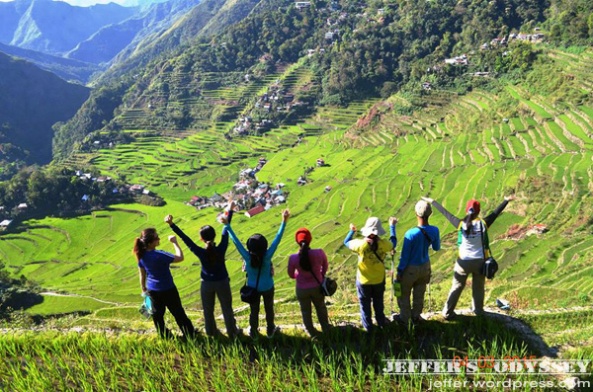
From the viewpoint, it’s a downward trek through precarious rock faces, narrow paths, and some wider concrete steps. Your constant companion? An excellent view.
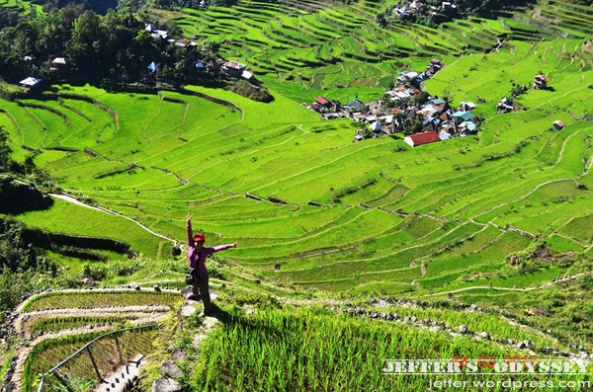


And here’s our guide, Arvin. AKA Darling. Haha!

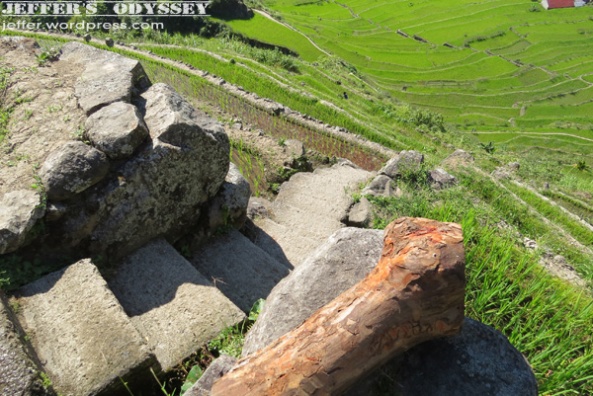 You really cannot help but snap away when, everywhere you turn, you find something soooo beautiful.
You really cannot help but snap away when, everywhere you turn, you find something soooo beautiful.

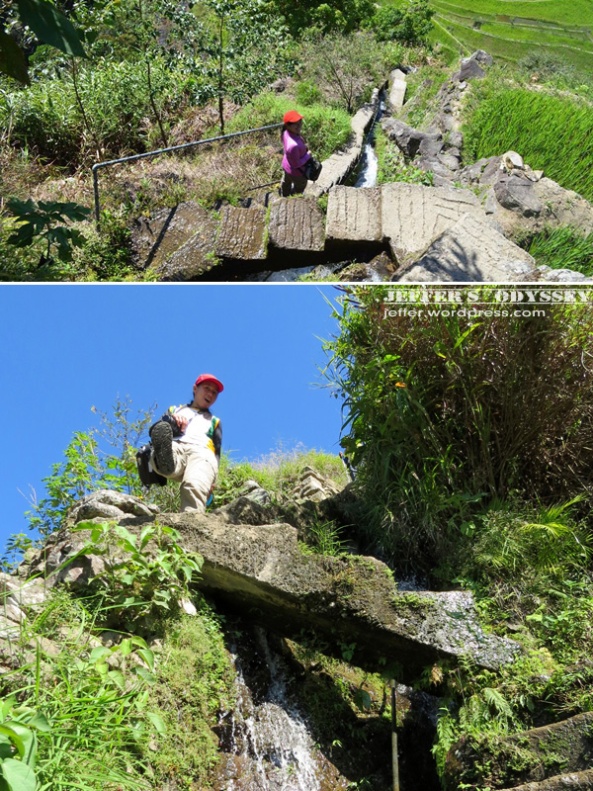
When we arrived at the bottom, we can’t help but look back. And see other visitors at the viewpoint. 🙂


 Include the Batad Rice Terraces on your next trip up north. Make it a side trip when you plan on hitting Sagada anytime soon. You won’t regret it.
Include the Batad Rice Terraces on your next trip up north. Make it a side trip when you plan on hitting Sagada anytime soon. You won’t regret it.
 AND HOWZABOUT A BIT OF A BLAST FROM THE PAST? I managed to dig up old photos from my first visit to Batad in 2007. And I only realized that was also in April!!!
AND HOWZABOUT A BIT OF A BLAST FROM THE PAST? I managed to dig up old photos from my first visit to Batad in 2007. And I only realized that was also in April!!!
Here’s a bit of a comparison.
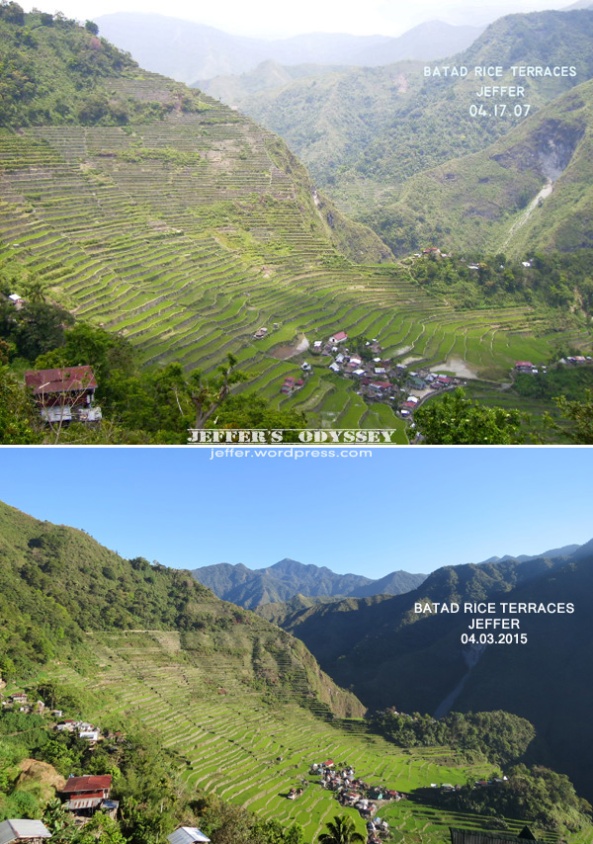

Except for more houses, it appears that not much has changed. I can only hope that, seven years – 10, 20, 50, 100 years – into the future, it would still retain its grace and beauty.
(You will find more details of our trip over at OJ Coders in this post.)



